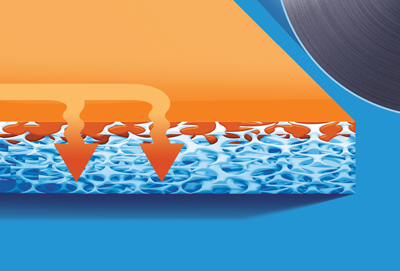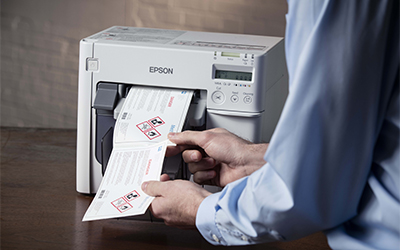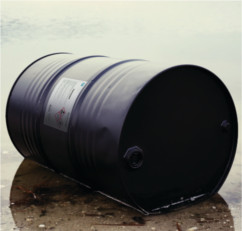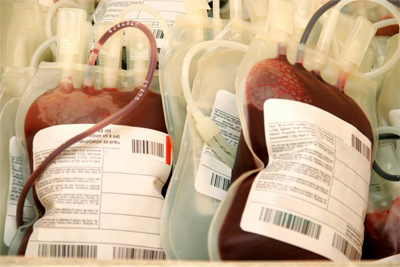Your product label needs to be waterproof, scuff-resistant, and tough enough to withstand excessive handling. A synthetic label paper is clearly the right answer, yet with so many choices — polyester (PET), vinyl (PVC), polypropylene and PPG TESLIN® label stock — the decision can be a tough one, too.
Fortunately, the choice might be easier than you think.
Many synthetic label papers appear similar on the surface, but they are not created equal. While most are polymer-based and many share the same durability characteristics, such as tear and water resistance, there are critical differences in their polymer- and polymer-blend compositions that can’t be ignored.
When you understand these differences, you can use that knowledge to determine which compositions best fits your application.
What Makes Teslin Labels Unique
 Teslin label paper is different from other synthetic papers because it is composed of micropores that absorb ink, toner and adhesive. As a result, Teslin label stock locks printed information into its structure, protecting it against wear from handling, scuffing and abrasion.
Teslin label paper is different from other synthetic papers because it is composed of micropores that absorb ink, toner and adhesive. As a result, Teslin label stock locks printed information into its structure, protecting it against wear from handling, scuffing and abrasion.
Other synthetic papers compositions are nonporous; inks and toner merely sit on their surfaces, making critical printed information vulnerable to wear.
Performance Features to Consider when Choosing Long-Lasting, High-Quality Labels
There are many variations in printability, durability, security, and other performance characteristics that play an important role in producing long-lasting, high-quality labels.
Easy Printability
 Unlike other synthetics, Teslin label paper is compatible with a wide range of print processes. It can be printed with a flexographic or offset process, as well as digital print technologies including laser, thermal transfer and many inkjet methods for on-demand and variable data printing.
Unlike other synthetics, Teslin label paper is compatible with a wide range of print processes. It can be printed with a flexographic or offset process, as well as digital print technologies including laser, thermal transfer and many inkjet methods for on-demand and variable data printing.
Other synthetic label stocks are often compatible only with a limited selection of print technologies. In fact, many synthetics can melt during laser printing. Teslin substrate withstands laser printing’s high heat levels.
Teslin label stock also is ready out of the box for digital printing. Other synthetics require corona or special coatings to enable print compatibility.
Tough Durability
 Do you require a label that lasts long and also looks good for the life of the label?
Do you require a label that lasts long and also looks good for the life of the label?
Teslin label stock delivers the lasting durability and legibility you demand. Teslin label paper offers excellent scuff and abrasion resistance while locking printed information into its structure for added protection against wear from handling and abuse.
It is easy to remove ink and toner from other non-porous synthetic papers, making printed information vulnerable to abrasion from handling and use.
See abrasion test results comparing different synthetic label papers.
Teslin label stock also passes British Standard 5609 (BS 5609). This test, which determines how printed labels will perform under marine conditions, is generally regarded as one of the industry’s highest standards for label durability.
There is no clearer proof of Teslin substrate’s resistance to chemicals, abrasion and water. As a result, Teslin label stock is a preferred solution for GHS labels and other industrial applications.
Teslin-based labels are also able to withstand extreme temperatures and freeze-thaw cycles. Other synthetic papers are vulnerable to very hot or cold temperatures and can become brittle and crack.
Static Electricity Concerns
If you work in the digital and screen printing industries, you are probably shockingly aware of the throughput and print quality problems associated with static.
But static can also be a special concern in certain manufacturing environments like chemical and coatings plants, as one tiny spark has the potential to ignite a fire or cause an explosion if solvents or flammable gases are in the atmosphere.
Many synthetic label papers build up static electricity, which has helped ignite several plant fires. Teslin label stock helps minimize these risks by dissipating static and protecting from the hazards of working with laser-printed labels.
Reliable Bonding Strength
 Is a water- and tear-resistant label paper still considered durable if the label doesn’t stay stuck to its surface?
Is a water- and tear-resistant label paper still considered durable if the label doesn’t stay stuck to its surface?
Microporous Teslin substrate enables multidimensional bonds to form between the adhesive layer and the facestock, enabling labels to adhere strongly to most surfaces. With other synthetic papers, the adhesive layer must bond with a coating, making the label prone to failure in harsh environments.
In addition, multidimensional bonding to adhesives helps Teslin substrate-based labels conform to different packaging shapes. Other synthetic papers lack this flexibility, causing corners to peel and labels to fail.
Built-in Tamper-Evident Security
For some label users, perhaps the most important consideration for choosing synthetic label stock is the level of security performance it offers.
Teslin label stock is inherently tamper-evident because it permanently distorts if alteration is attempted, making it ideal for tamper-evident security labels. Other synthetics require added printing, converting, and cost to ensure tamper evidence.
Find out if Teslin label stock is tough enough for your label application
With superior performance in terms of printability, durability, static dissipation, bondability, and security, Teslin label paper offers a superior solution to satisfy your durable packaging and labeling needs.
Do you have a demanding label application that could benefit from Teslin label paper? If so, visit our label stock product page or request a sample.